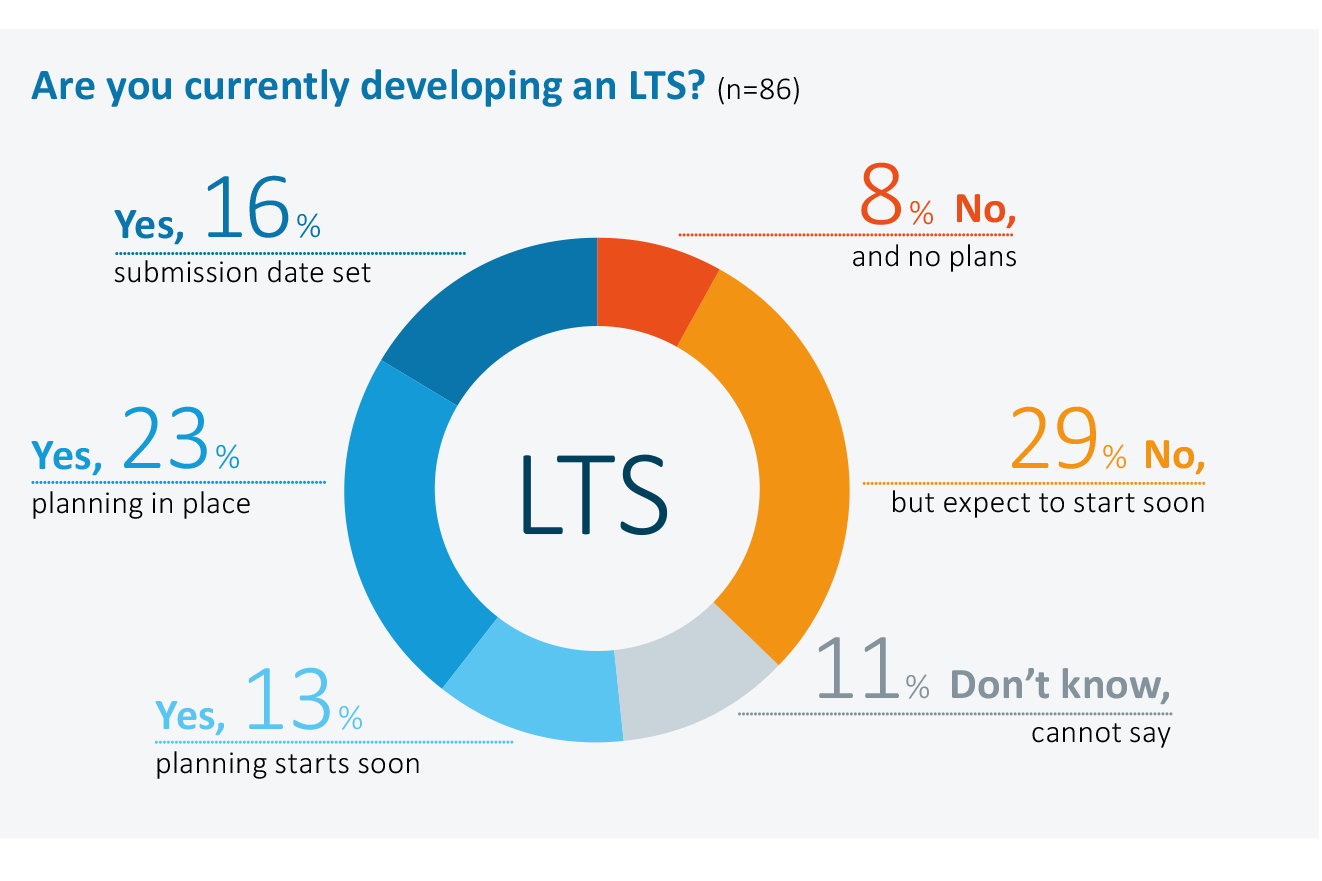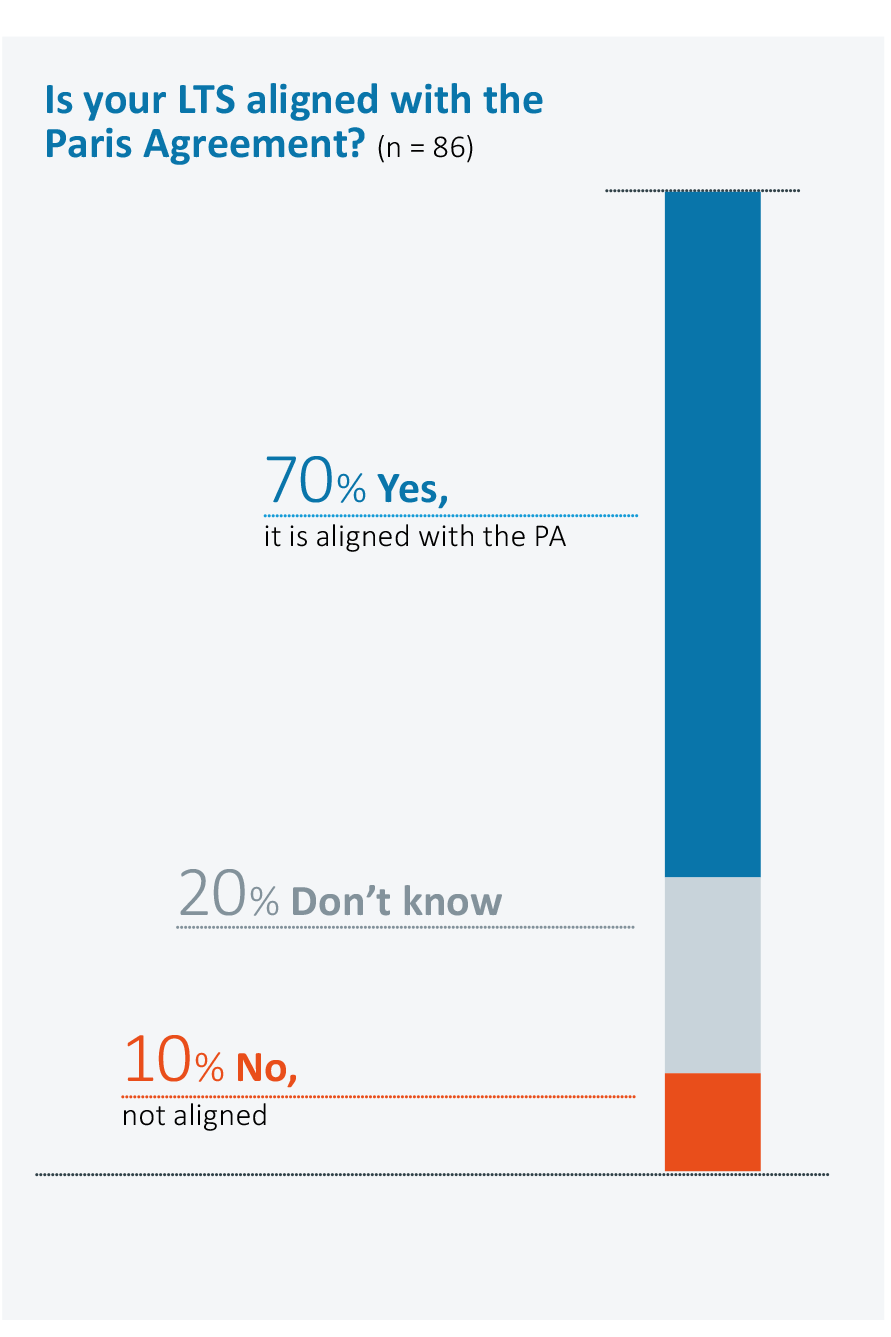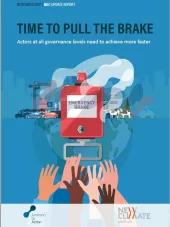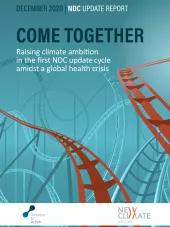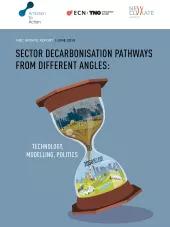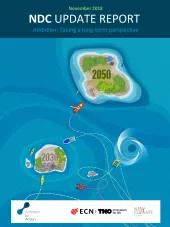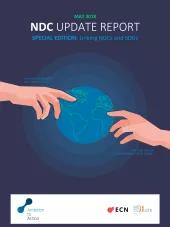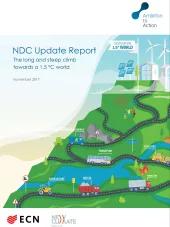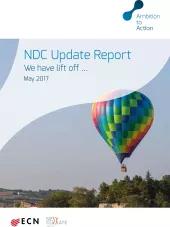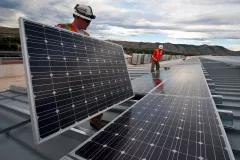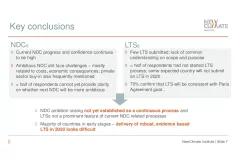The NDC Update Report tracks the progress on the implementation of Nationally Determined Contributions (NDCs) to the Paris Agreement. The theme of this report is the role of long-term low greenhouse gas emission development strategies (LTSs) in achieving the Paris Agreement goal. This report argues for the importance of developing long-term (sector) strategies to determine the highest possible ambition for the coming NDC update (until 2030) and to signal a clear path for future NDC ambition raising (towards net-zero in 2050). Governments can use the NDC update to signal that indeed the highest possible ambition needs to lead to decarbonisation by 2050 or shortly thereafter.
The NDC implementation and review cycle
A year before the first update of NDCs is due in 2020, and under pressure from civil society calling on governments to take stronger action, there are several reasons to review and strengthen the current NDCs.
Looking at the survey results about implementing the current NDC, progress and confidence continue to be high for most topics, yet, ambitious NDCs still face challenges and will be hard to achieve without commitment and support from the private sector. The survey results on the next NDC show that over half the respondents cannot (yet) provide clarity on whether their government intends to raise ambition in the update that is due next year. On the timing of submission, around 10% of respondents stated that their next NDC would be submitted within this year (2019), but the vast majority (almost 80%) stated they would submit it in 2020. When asked about the topics most pertinent in national discussions on ambition raising, this most often seems related to costs and economic consequences, while respondents indicate paying less attention to social and environmental benefits. 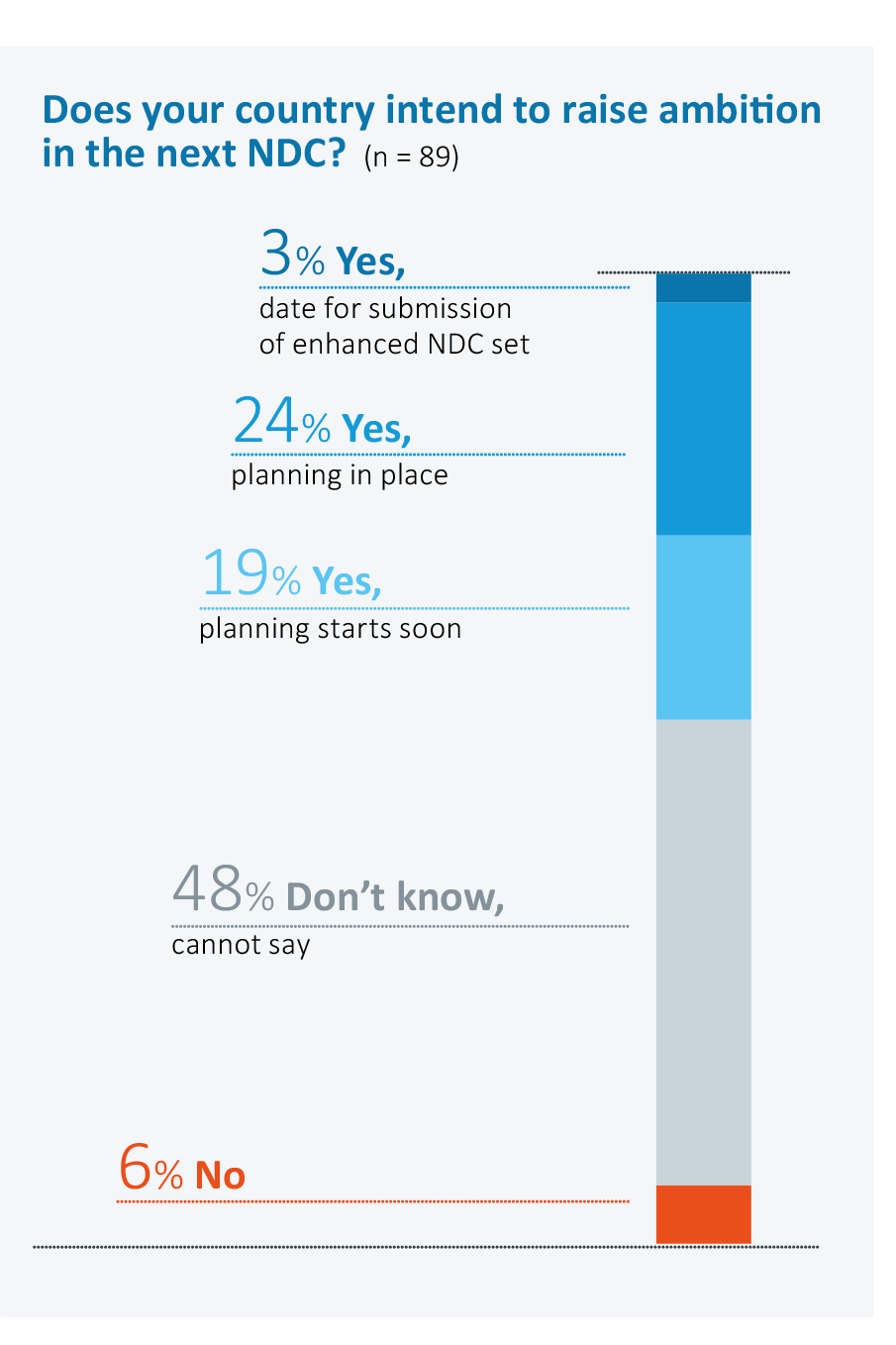
Development of LTSs
The Paris Agreement calls for “long-term low greenhouse gas emission development strategies” (LTSs) but gives little guidance beyond that. We propose eight key elements for LTS and LTS processes: 1) pay attention to the process more than the document; 2) include pathways for GHG emission until 2050 and beyond; 3) include all sectors of the economy; 4) treat process as ongoing visioning exercise; 5) expect extensive coordination efforts; 6) reflect on immediate next steps; 7) clarify how much financing and other support is required; 8) identify synergies and trade-offs with the 2030 Sustainable Development Goals and to adaptation.
We asked survey respondents about the progress their government has made towards developing an LTS. More than half the respondents had not actually started the LTS process (though 13% expect to start soon) and although LTSs are an integral part of the ambition mechanism, only 70% could confirm that their LTS is or will be consistent with the goals of the Paris Agreement. With the majority of respondents in early (planning) stages of LTS development timely delivery of robust, evidence based LTS looks difficult.
Alignment of LTSs in the context of the paris agreement
In light of the IPCC findings, and the observation that not one sector or country is able to compensate for others, the common goal of net-zero in 2050 across countries and sectors should determine what their ‘highest possible ambition’ could be. Here countries with lesser resources, capacities and historic responsibility need to be supported by others. As in previous editions of the report we argue that NDC strengthening and ambition raising should be seen as a continuous process. Technologies that seemed out of reach yesterday may have reached sufficient market penetration or be available at accessible costs to make them realistic alternatives. Change takes time for society to process and people to adjust, leading to confidence and higher ambition; early stage resource investments start to pay off. 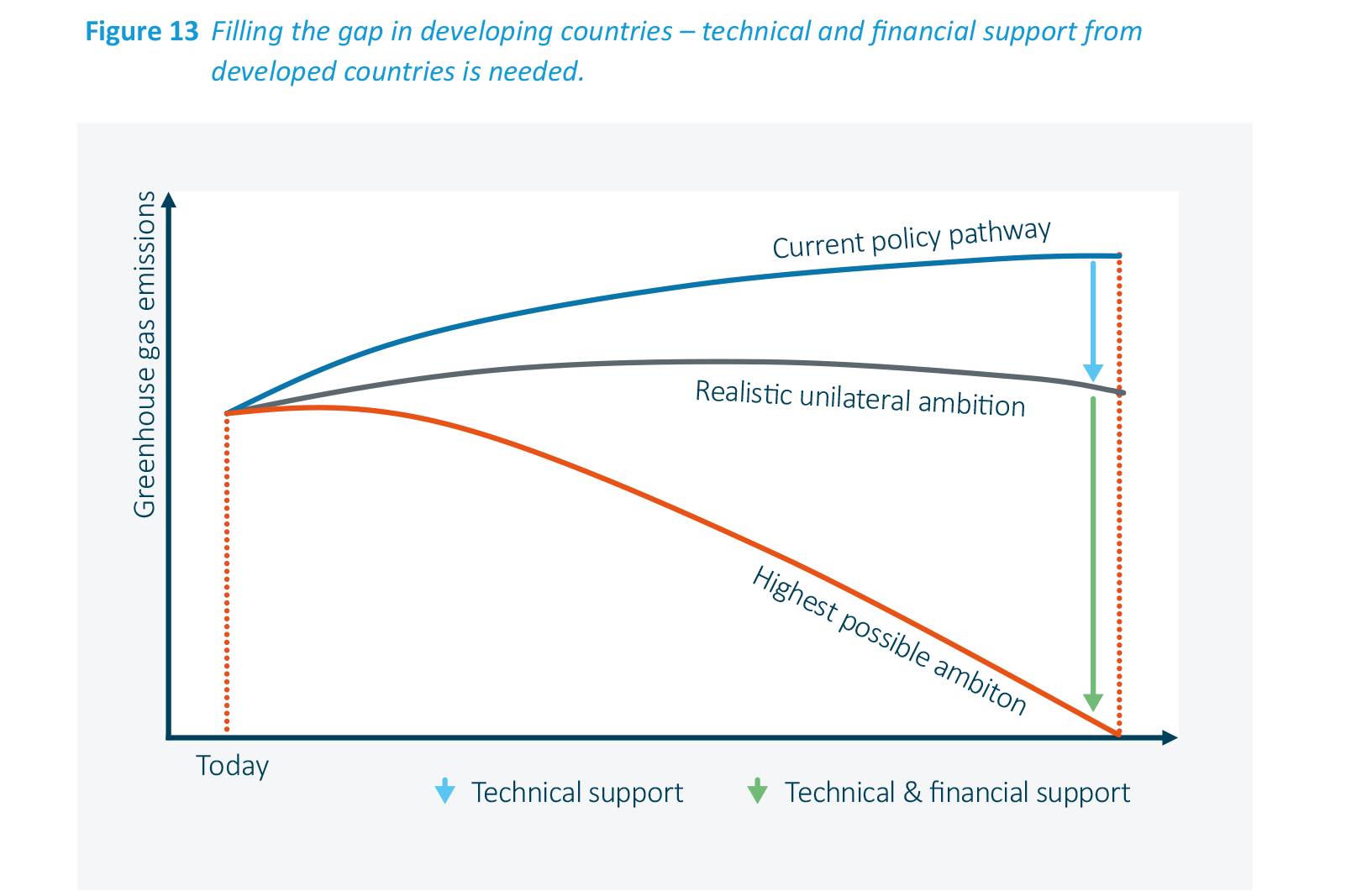
Overview of submitted LTSs and highlights
At the time of writing, 13 LTSs have been submitted to the UNFCCC. While the content and process seem to vary greatly, common highlights can be seen for certain key elements. Stakeholder engagement and participatory processes are a key element of LTSs, most LTSs link to or plan the elaboration of national plans and regulations, a majority of countries present their LTS as “living documents” and although there are discrepancies in the understanding of Paris Aligned pathways, we see positive developments in countries aiming for net-zero emissions.
Development and implementation of LTSs from different perspectives
We asked experts and organisations to reflect on the role of LTSs in effective climate policy, and where they see challenges going forward. Overall, seven organisations contributed to the debate from different angles on the development and implementation of LTSs.
The first four contributions discuss 1) strengthening the link between the NDCs and LTSs with caution to take country context and -processes into account and not develop separate strategies (NDC Partnership); 2) early experiences of LTS development showing that NDC processes need to be carefully designed and executed (GIZ), 3) LTSs stand out for their long horizon and necessity for whole-of-government scope (UNDP) and that 4) transparency goes hand-in-hand with inclusiveness and governance of the LTS process (WRI).
The three following contributors reflect on the role of sectors: 5) LTSs contribute in defining Paris aligned investments and assess financial risks from adaptation (AFD/IDFC), 6) the concept of Communities of Practice has proven to be useful in complementing conventional technical assistance in the energy sector (SD strategies/LEDS-GP) and the elaboration of four technology pathways helps to build a vision for energy supply (NREL/LEDS-GP) and 7) LTSs should consider the long- term interactions between agriculture, natural resources and sustainable development in light of the sector’s intricate links with food security and nutrition, poverty alleviation and rural development (FAO).

